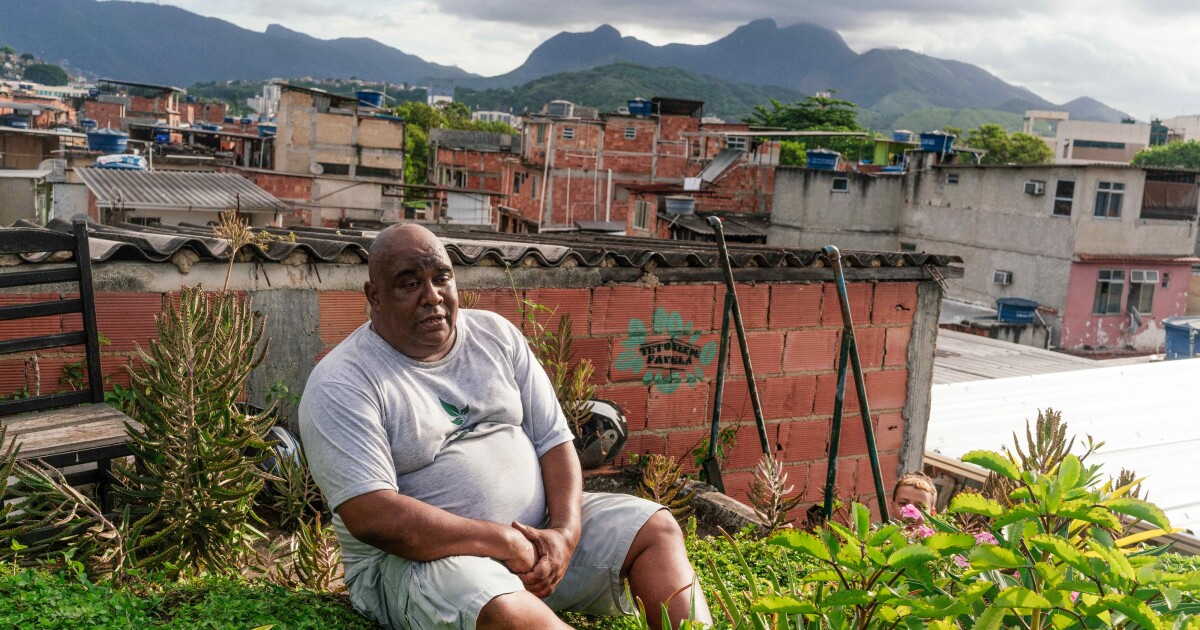It was a sunny September morning in the Parque Arará favela in Rio de Janeiro and volunteers were preparing plants to be placed on the roof of Reginaldo Gomes da Silva.
Students from the neighborhood elementary school and the nearby Federal University helped roll Spanish moss, kalanchoe and other tropical succulents into bidim, a lightweight polyester geotextile made from recycled beverage bottles. They tied the small bundles together with string and handed them to the 69-year-old radio host so he could place them in the grooves in the roof tiles of his three-story house.
Summer was fast approaching – in Brazil it begins in December – and Gomes da Silva was already worried about the heat. Even in the depths of winter in the southern hemisphere, temperatures had already broken records, reaching nearly 104 degrees Fahrenheit by the end of August.
“I’m lucky that my house is on a corner where there’s usually a good breeze,” he says. “But even if that is the case and all the doors and windows are open, I still have to run my fan continuously.”
During the same unseasonably hot month, he met his roommate Luis Cassiano in Parque Arará. Gomes da Silva had spotted Cassiano in the neighborhood square, surrounded by a group of children. They were attentive as he showed them how to best care for plants and explained how a special type of garden created on rooftops can help brighten their homes, schools and other places they visit on hot days , to cool.
Cassiano is the founder of Teto Verde Favela, a nonprofit organization that teaches favela residents how to build their own green roofs to beat the heat without overloading power grids or spending money on fans and air conditioning. He came across the concept over a decade ago while researching how to make his own home bearable during a particularly hot summer in Rio.
Green roofs are a method that has been around for thousands of years and was perfected in Germany in the 1960s and 1970s. When Cassiano first heard about them, green roofs were not uncommon in wealthier areas. But in Rio's more than 1,000 low-income favelas, they weren't even considered as an option because of their high cost and weight.
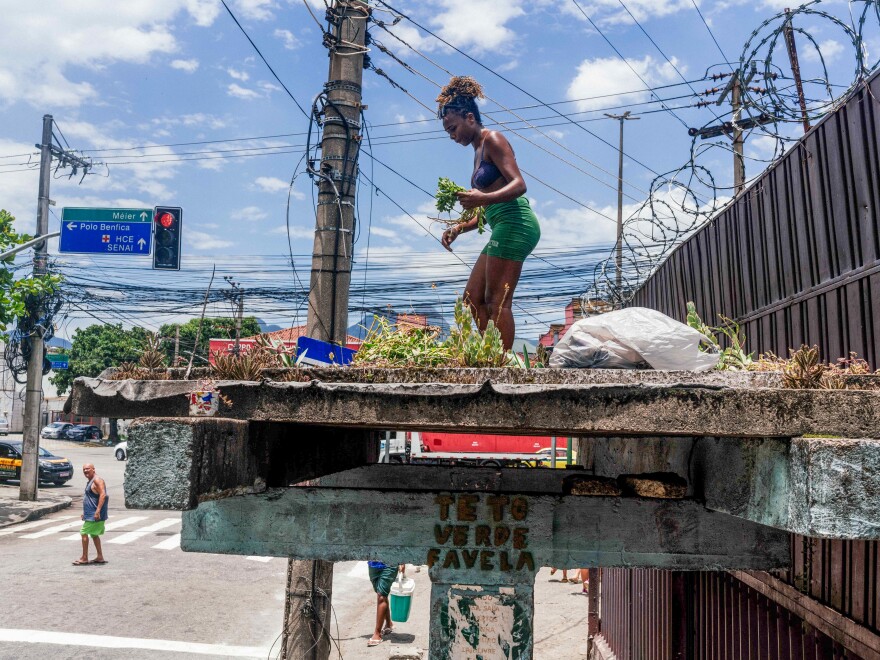
That is until Cassiano decided to work with a civil engineer who was studying green roofs as part of his doctoral research to find a way to make them safe and affordable for favela residents. Over the next decade, his nonprofit organization emerged and green roofs, from homes and daycare centers to bus stops and food trucks, sprouted around the community of Parque Arará.
When Gomes da Silva heard the story of Teto Verde Favela, he immediately decided that his house should be the group's next project, not only to cool his own home, but to teach his neighbors how green roofs can do theirs benefit the community and others like it.
Relief for a heat island
Like many low-income urban communities, Parque Arará is considered a heat island, an area without green space that is more likely to suffer from extreme heat. A 2015 study by the Federal Rural University of Rio de Janeiro showed a 36-degree difference in land surface temperatures between the city's warmest neighborhoods and nearby vegetated areas. It also found that land surface temperatures on Rio's heat islands had increased by 3 degrees over the past decade.
This type of extreme heat can severely impact human health and lead to increased dehydration and heat stroke. worsening of chronic health conditions such as respiratory diseases; effects on brain function; and ultimately lead to death.
However, green roofs absorb less heat than other low-cost roofing materials common in favelas, such as asbestos tiles and corrugated steel sheets, which conduct extreme heat. Sustainable infrastructure also enables evapotranspiration, a process in which plant roots absorb water and release it as vapor through their leaves, cooling the air in a manner similar to sweating in humans.
The plant-covered roofs can also dampen noise pollution, improve the energy efficiency of buildings, prevent flooding by reducing stormwater runoff, and ease anxiety.
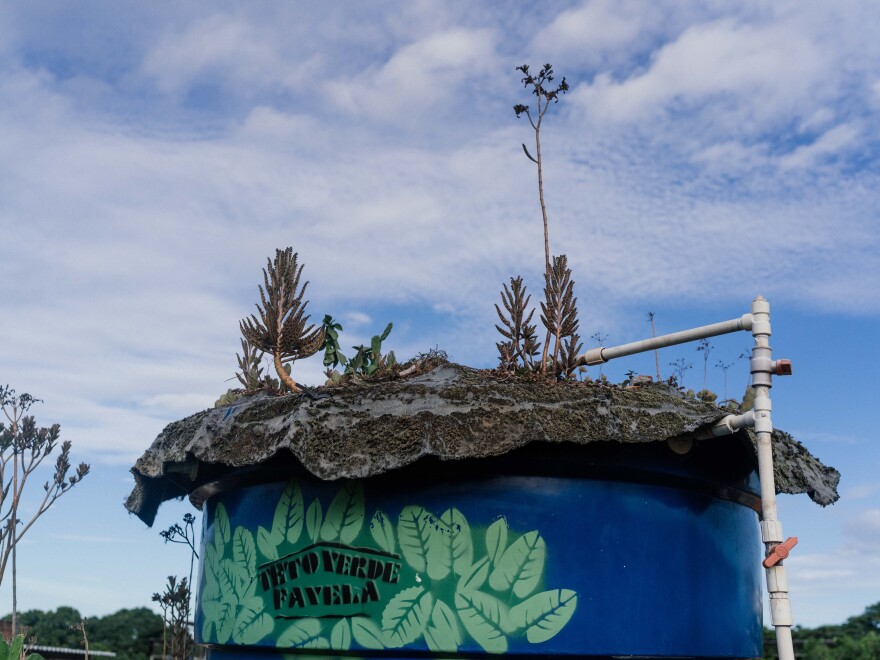
“Just being able to see the greenery is good for mental health,” says Marcelo Kozmhinsky, an agricultural engineer in Recife who specializes in sustainable landscaping. “Green roofs have so many positive impacts on overall wellbeing and can be built to so many different specifications. There really are endless possibilities.”
An easy solution
But the multiple layers required for traditional green roofs — each with its own purpose, such as insulation or drainage — can make them quite heavy.
This can be a problem for favelas like Parque Arará.
“When the elite build, they plan,” says Cassiano. “They are already considering putting green roofs on new buildings, and old buildings are being built to code. But not in the favela. Everything here is old and is being built up in every way possible.”
Without the oversight of engineers or architects and made from everything from scrap wood and blobs to bricks and cinder blocks, construction in favelas cannot necessarily support the weight of all the layers of a traditional green roof.
This is where Bidim comes into play. Lightweight and conducive to plant growth – the roofs are hydroponic, so no soil is required – it was the perfect material to enable green roofs in Parque Arará. (Cassiano reiterates that safety is paramount in every green roof he builds. An engineer or architect is always consulted before Teto Verde Favela begins a project.)
And it was cheap. Due to the bidim and vinyl sheets used as a waterproof shield (as opposed to traditional asphalt pavement), Cassiano's green roofs cost just 5 Brazilian reais, or $1 per square foot. A traditional green roof can cost up to 53 Brazilian reais or $11 for the same area.
“It's about making something possible that has such important health and social benefits for everyone,” says Ananda Stroke, an environmental engineering student at the Federal University of Rio de Janeiro who volunteers at Teto Verde Favela. “Everyone deserves to have access to green roofs, especially people living on heat islands. They are the ones who need it most.”
It's blooming everywhere
Broad-leaved crawlers make their way along the concrete walls of Gomes da Silva's house. Clumps of leaves fall from baskets of ferns attached to the frame that supports the roof, and pots of all sizes are scattered on tables and floors – palm trees, roses and other green, yellow and purple plants sprout from the earth.
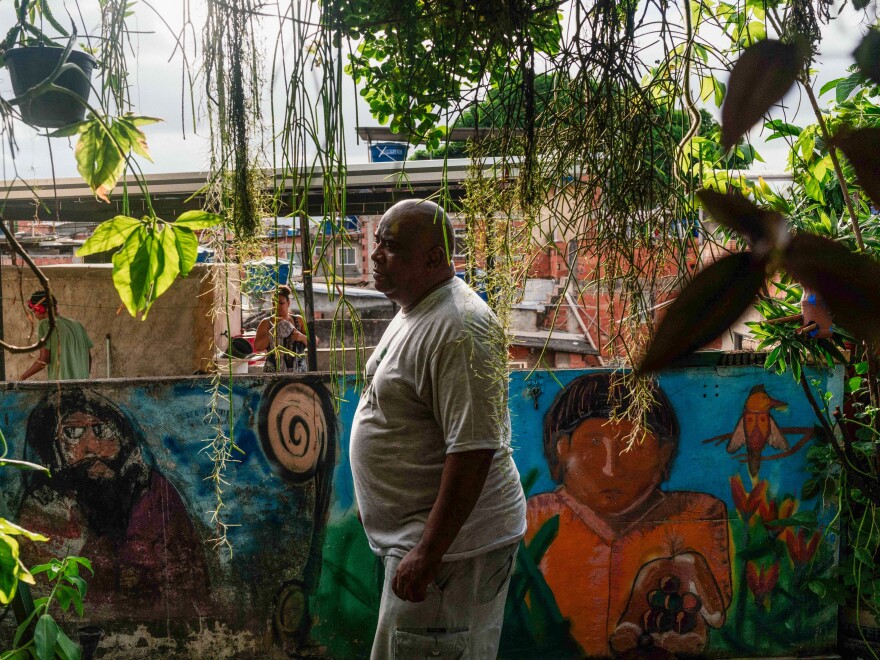
In Gomes da Silva's backyard, sweet potatoes, corn and rosemary grow in long rectangular pots.
He has lived in this favela – a word that refers to a native Brazilian shrub – his entire life and worked in the garden for just as long.
“My mother taught me everything about caring for plants: when to water them, how much sun they need and what to do if they start to wilt,” he says. “She loved having them around the house. She would have liked to have them over it too.”
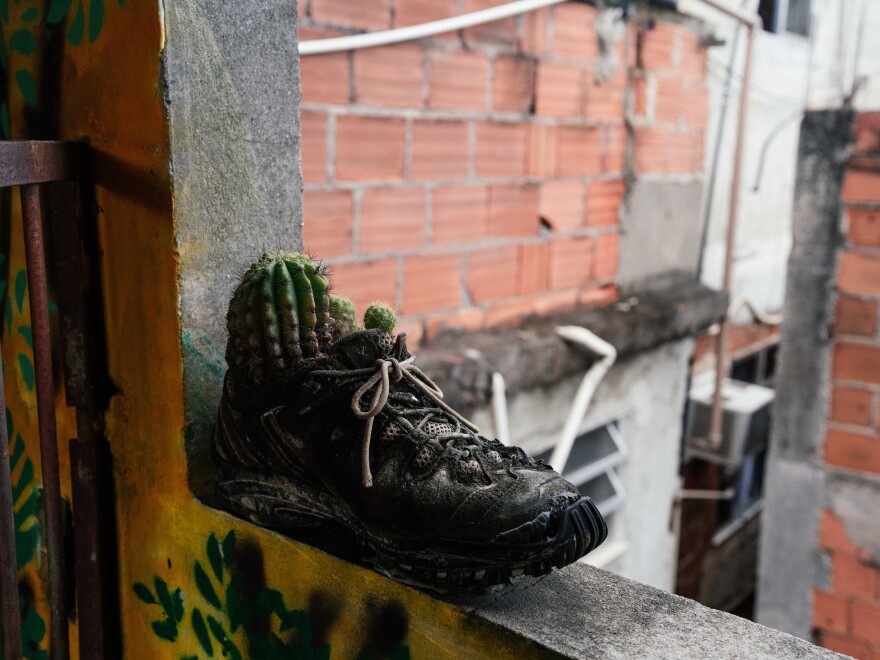
It wasn't long ago that Cassiano and the volunteers helped install the green roof on his home, but he can already feel the difference. It's similar, says Gomes da Silva, with the moto-taxi stand with a green roof where he sometimes waits for a ride.
“It used to be unbearable when it was really hot outside,” he says. “But now it’s cool enough for me to relax. Now I can breathe again.”
Jill Langlois is an independent journalist based in São Paulo, Brazil. Since 2010, she has been working freelance in the largest city in the Western Hemisphere, writing and reporting for publications such as National Geographic, The New York Times, The Guardian And Time. Her work focuses on human rights, the environment and the impact of socioeconomic issues on people's lives.
Copyright 2025 NPR
